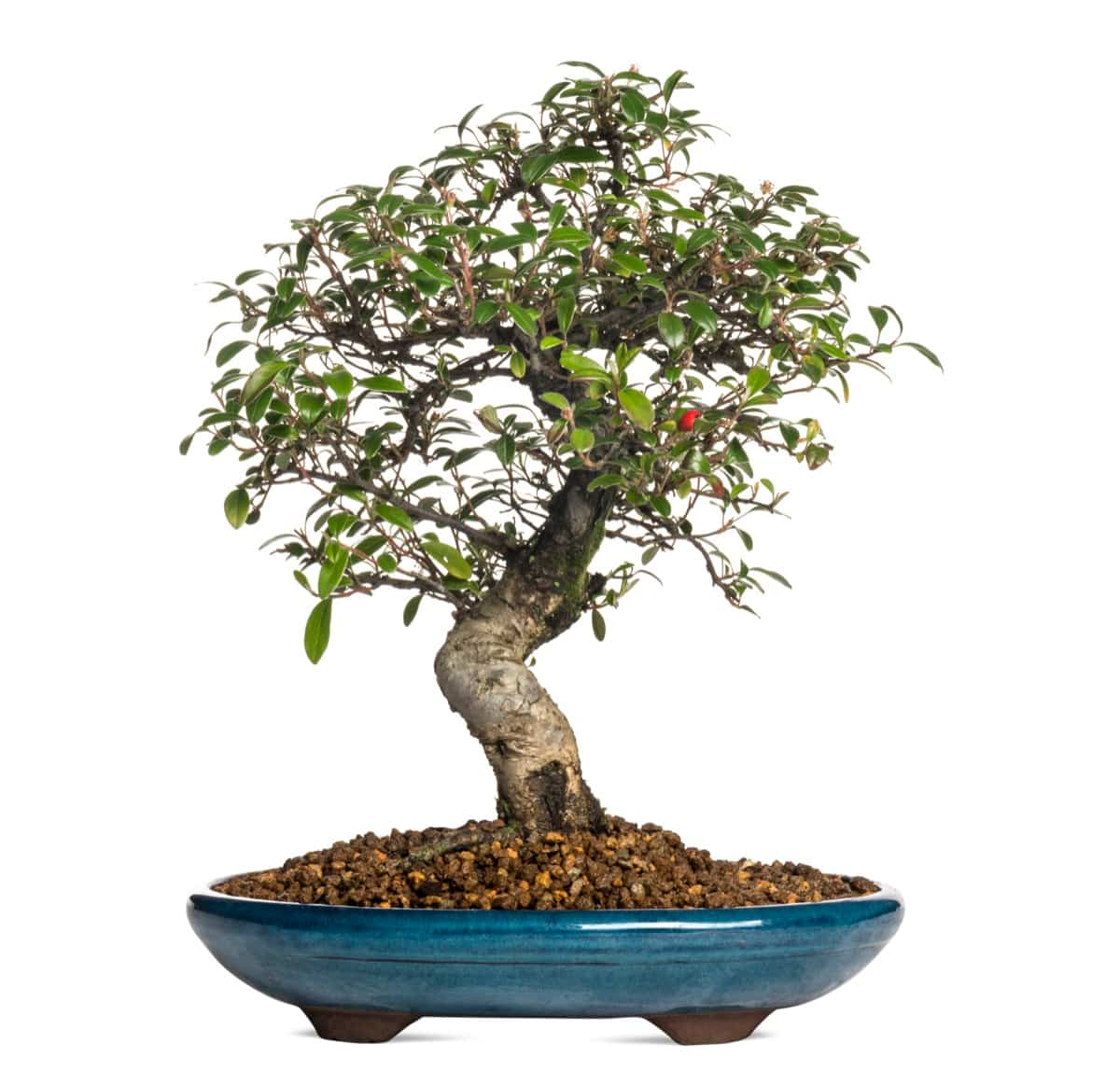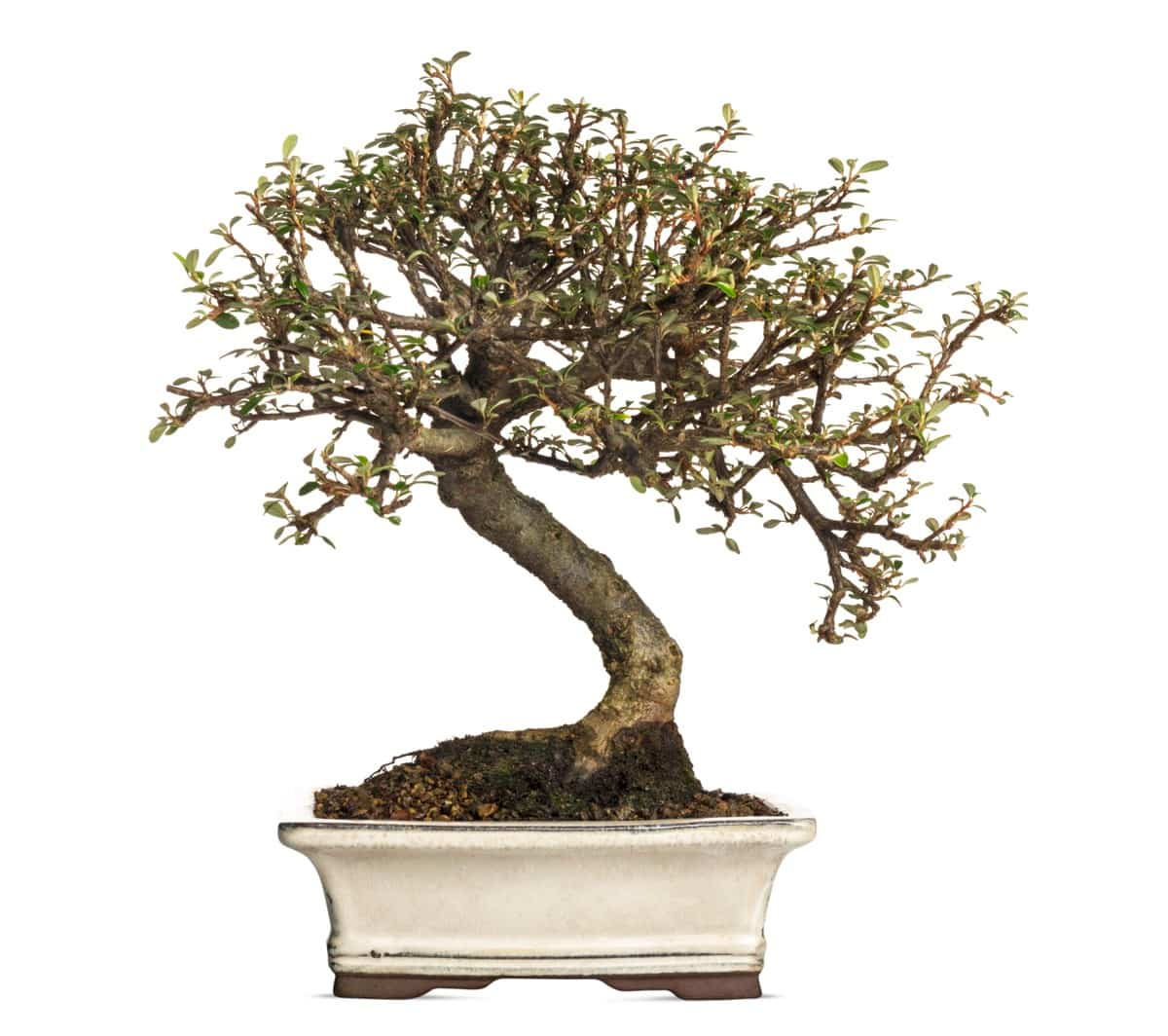Cultivating a Bonsai Cotoneaster is an enriching hobby, blending art and science. This unique plant captures the heart of many garden enthusiasts with its intricate branches, delicate leaves, and attractive flowers. However, growing a Bonsai Cotoneaster isn’t without its challenges. There can be various problems, like the Cotoneaster Bonsai leaves turning brown or the fear of the Cotoneaster Bonsai dying, which can be disheartening.

This comprehensive guide will offer practical strategies, such as how to prune the Cotoneaster Bonsai effectively, choose the best Cotoneaster for Bonsai, and ensure the healthy development of your Cotoneaster Bonsai flower. By following these steps, you will learn the art of nurturing this plant and develop a deeper connection with nature.
How to Grow and Care for Cotoneaster Bonsai
Choosing the Right Bonsai Cotoneaster
The first step in growing a successful Bonsai Cotoneaster is choosing the right variety. Different types of Cotoneasters exhibit various growth habits, foliage, and flowers, making certain types more suitable for Bonsai than others. When choosing a Cotoneaster for Bonsai, consider its size, growth rate, and compatibility with Bonsai techniques.
Dwarf or compact varieties are often the best choice due to their miniature proportions, which mimic full-size trees better. Also, pay attention to the color and texture of the leaves, the blooming period, and the form of the Cotoneaster Bonsai flower, as these characteristics significantly contribute to the aesthetics of the plant.
Preparing the Soil for Bonsai Cotoneaster
Proper soil preparation is crucial in nurturing a healthy Bonsai Cotoneaster. The soil must provide the right balance of water retention, aeration, and nutrient supply. While the exact soil composition can vary based on your specific situation, a general Bonsai mix often includes organic and inorganic materials.
The organic components contribute nutrients, while the inorganic ingredients enhance drainage and aeration. Additionally, the soil pH should be slightly acidic to neutral. However, avoid using overly rich or compacted soil, which may cause water logging and hinder root development. Regular soil testing can help maintain the appropriate pH and nutrient levels, ensuring your plant thrives.
Planting Bonsai Cotoneaster Tree in a Container
After preparing the soil, the next step is to plant your Bonsai Cotoneaster. Select a suitable container with adequate drainage holes to prevent water stagnation. Container size must align with Bonsai size. Too large a container can lead to overwatering issues, while a smaller one may restrict root growth.
Position the tree in the container so it’s slightly off-center, which is more visually appealing in Bonsai art. Once the tree is properly positioned, fill the container with the prepared soil, gently firming it around the roots. Make sure the tree stands upright and secure in its new home.
Watering Techniques for Bonsai Cotoneaster
A crucial aspect of maintaining a healthy Bonsai Cotoneaster is providing the correct amount of water. Overwatering or underwatering can lead to several problems, such as the Cotoneaster Bonsai leaves turning brown. The aim is to keep the soil slightly moist but not waterlogged.
The watering frequency depends on various factors, like the size of the plant, the type of soil, the size of the pot, and the surrounding environment. To determine when to water, feel the soil with your fingers regularly instead of relying on a fixed watering schedule. If the top layer feels dry, it’s time to hydrate.
Fertilizing Bonsai Cotoneaster
Proper fertilization is essential to supplement the nutrient supply in the confined space of the Bonsai container. Fertilizer selection depends on your Bonsai Cotoneaster’s unique nutrient needs. A balanced, slow-release granular fertilizer containing nitrogen, phosphorus, and potassium is recommended.
These nutrients will encourage healthy growth, vibrant foliage, and the production of beautiful Cotoneaster Bonsai flowers. Apply fertilizer in the growing season, typically from spring to early autumn. Always follow the manufacturer’s instructions to avoid over-fertilization, which can damage the roots and potentially lead to your Cotoneaster Bonsai dying.
In case you missed it: How to Grow and Care for Calamondin Orange Bonsai: Planting, Pruning, and Repotting

Pruning and Shaping Bonsai Cotoneaster
Pruning and shaping are integral to the aesthetic appeal of Bonsai Cotoneaster. Regular pruning helps maintain the size of the tree, encourages new growth, and gives the Bonsai its desired shape. To prune Cotoneaster Bonsai properly, use sharp, clean shears to prevent harming the plant. Trim the new growth back to two or three leaves, and remove any dead, diseased, or crossing branches. Shaping or wiring is usually done during the growing season when the branches are flexible. Care should be taken not to damage the bark or stress the tree excessively.
Protecting Bonsai Cotoneaster From Pests and Diseases
To keep your Bonsai Cotoneaster healthy, protecting it from pests and diseases is crucial. The most common pests that target Bonsai Cotoneaster include aphids, scale insects, and caterpillars. These pests can be controlled with regular inspections and appropriate treatments. Diseases often occur due to poor cultural practices, such as overwatering or inadequate light, leading to root rot or leaf spot issues. Avoiding these conditions is crucial to prevent your Cotoneaster Bonsai from dying. Act promptly to address any indications of illness or pest invasion.
Providing Adequate Sunlight for Bonsai Cotoneaster
Bonsai Cotoneaster thrives best in a location that receives plenty of sunlight. Sunlight is critical for photosynthesis, which in turn influences the growth and development of the plant. However, while the plant enjoys the sun, it should not be exposed to the intense midday sun, which could lead to leaf scorch. A location that offers morning sunlight and afternoon shade would be ideal. Exposure to sunlight can also influence the color of the Cotoneaster Bonsai leaves, the flowering period, and the plant’s overall health.
Maintaining Temperature and Humidity for Bonsai Cotoneaster
Bonsai Cotoneaster is relatively hardy and can tolerate various temperatures, making it suitable for most climates. However, it prefers cooler temperatures during the winter to induce dormancy, which is crucial for its health and vitality. Meanwhile, the humidity level around the Bonsai Cotoneaster should mimic its natural habitat. Too low humidity can cause the leaves to dry out and turn brown. A water-filled tray with pebbles keeps the plant’s surroundings humid. Avoid placing the Bonsai near heating vents or drafts, as these can dry out the plant.
Repotting Bonsai Cotoneaster
Eventually, your Bonsai Cotoneaster will outgrow its pot, necessitating repotting. Repotting refreshes the soil, provides more room for the growing roots, and allows for assessing the plant’s health. The repotting frequency depends on the growth rate of the Bonsai.
Generally, younger, fast-growing plants require repotting every two years, while older, slower-growing ones can go for three to five years between repots. Always choose a slightly larger pot and fresh soil for repotting. Post-repotting, ensure the plant is well-watered and kept in a shaded spot until it recovers and new growth emerges.
In case you missed it: How to Grow and Care for Japanese Winterberry Bonsai: Planting, Pruning, and Repotting

Conclusion
Growing a Bonsai Cotoneaster requires patience, dedication, and a passion for nurturing living art. The rewards, in terms of the plant’s captivating beauty and the sense of satisfaction derived from its care, are well worth the effort. The practice also offers a calming, therapeutic experience that connects you with nature, helping you to appreciate its intricacies and wonders.
- Feed Your Flock for Less: Top 10 Tips to Save on Chicken Feed
- Ultimate Guide to Ossabaw Island Hog: Breeding, Raising, Diet, and Care
- Hatching Answers: The Top 10 Reasons Your Chickens Aren’t Laying Eggs
- Eggs and Economics: Breaking Down the Cost of Raising Backyard Chickens
- Defend Your Greens: Proven Methods to Keep Iguanas Out of Your Garden
- Ultimate Guide to Cinnamon Queen Chicken: A Comprehensive Guide for Beginners
- Ultimate Guide to California Tan Chicken: Breeding, Raising, Diet, Egg-Production and Care
- Ultimate Guide to Marsh Daisy Chicken: Breeding, Raising, Diet, and Care
- 10 Types of Chicken Farming Businesses You Can Start for Profits